Rokinon recently released a new offering in the 35mm lens range, and I was super excited to get my hands on it for a number of reasons. The great price, wide aperture, and popular focal length of 35mm makes for a great combo, but never having used a Rokinon product before I wasn't quite sure what to expect. After an extensive review covering nearly two months (thank you Rokinon, for lending it to me for that long!) I am finally able to come to a conclusion about this new offering.
As anyone who has ever looked into purchasing a prime lens knows, the 35mm market is heavily saturated with a number of options from a number of different manufacturers. Canon, Nikon, Sony, Sigma, Tamron, in both fast and slow varieties. Unless you're dead set on a Canon L or Nikon G, it can be a tricky purchase. Hopefully this review helps you to narrow down the choices and flesh out the details of a lens that just hit the scene.
In order to explore as many different avenues as possible for using this lens, I enlisted the help of another shooter. While I'm primarily an architecture and interiors photographer (where 35mm is actually a popular focal length) I wanted to be able to give the lens a fair shake in other arenas where 35mm is even more widely-used, for example, portraiture, lifestyles, and videography. Due to the rapidly growing popularity of DSLR video, I called upon an experienced videographer friend of mine, Peter Donaghy, to help shoot some video with the lens. Peter usually shoots lifestyle and music and I figured that the low light and portraiture subjects would make a good addition to our real-world evaluation of the lens.
First Impressions
Upon unboxing the lens, I was immediately struck by the solid build quality of the lens. The construction is solid metal and the paint finish is very uniformly applied and resistant to chipping and scuffing. It also looks pretty slick; even though the red ring immediately makes me think 'Canon L,' the black and red is a classy combo. The metal mount ring is very solid and there were no loose or sloppy points that I have noticed over the past two months of shooting with the lens. The hood fit snugly and didn't wiggle around (unlike many much more expensive Canon lenses that I've used over the years). The aperture ring is snappy and the focus ring is smooth, with a beautiful even throw that allows for fine manual focusing.
For Photography
Feeling rather confident, I took the lens along to a couple of interior shoots for designers around LA. While interiors isn't exactly the first thing that springs to mind when people purchase a new 1.4 lens, it was a great way to test out the real world sharpness and microcontrast on a paid gig. This is real world stuff, I've never been a fan of measurebating or MTF charts, much preferring to check out the real world results in real world situations when compared to other pieces of gear that I've used. Since the lens is manual aperture and manual focus for all mounts except Nikon (focus confirmation is available for an additional $20), it may take a bit of getting used to. Since I usually use live focus for my interiors work, this wasn't really a problem, but it's something to be aware of. For ease of viewing and comparison, all photos in this article are simply jpegs created from the raw files supplied by the camera after import through Aperture; no adjustments were applied to any image or video.
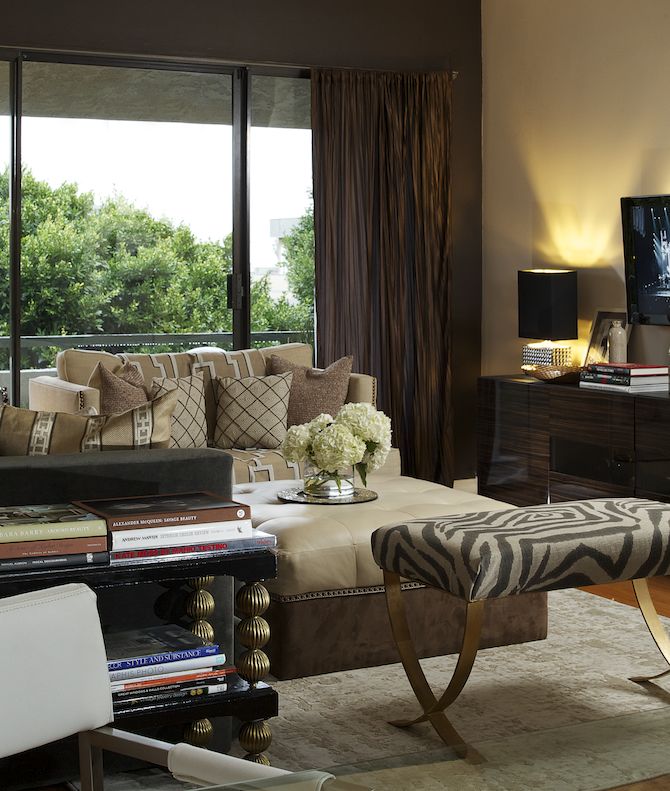
 100% edge crop of above photo, raw exported to jpeg
100% edge crop of above photo, raw exported to jpegSince I'm a huge stickler for distortion in lenses, this is always something I look out for. Barrel distortion was basically a non-significant factor when compared to lenses like the Canon 17-40 and 16-35 II. This is an absolute blessing for photographers who do work for designers and architects, as bowed lines and a 'fisheye' effect are pretty much unusable as a final product, and pushing and pulling pixels to straighten lines out always tends to degrade image quality more than I like. I found that I had to do little to no correction in post for barrel distortion which was a nice treat.

Contrast and sharpness are absolutely superb, as well. I own a number of Canon L lenses and this, to my naked eye, did not seem any less sharp or any less contrasty than any of my lenses. Color rendition is absolutely fantastic and I didn't have to touch the saturation slider at all while adjusting my photos in post.
There is a slight bit of vignetting when shooting wide open, as with most fast lenses in this range. I personally don't mind it and think that it adds a nice effect to most photos, though your opinion of course may differ.
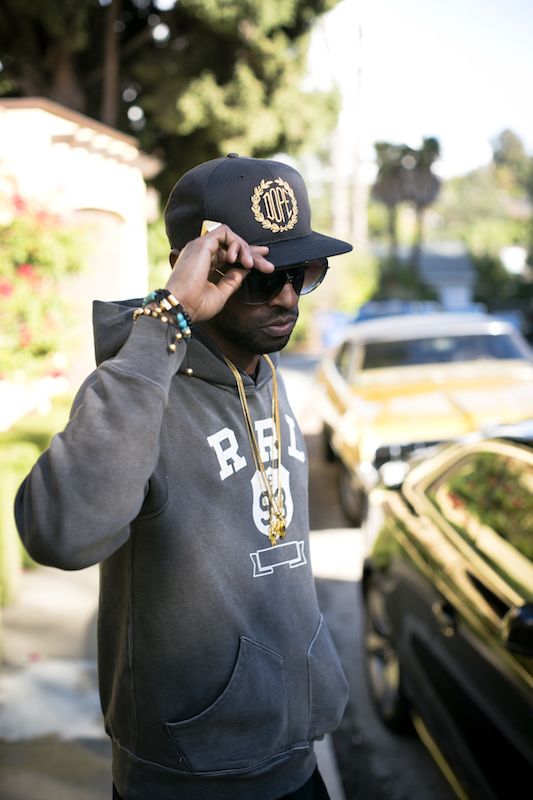
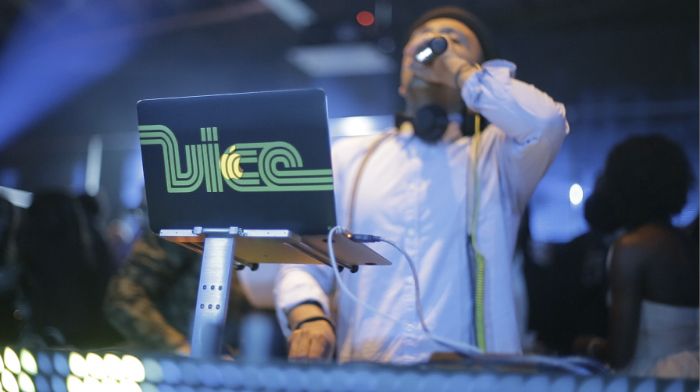
Pete's Take
My name is Peter Donaghy, and I'm a DP, photographer and videographer in Los Angeles. I mostly shoot lifestyle, musicians, nightlife and dance footage and stills for some of Los Angeles' largest venues and promotors. Since we wanted to show what this lens can do in fast-paced environments with live subjects, rather than Mike's glacially slow interiors work, we brought it out on a few shoots to capture stills and video.
I have to say that I'm incredibly impressed with this lens in the low light environments that I usually work in. I shot all of this footage using the Rokinon 35mm 1.4 and a Canon 5d Mark III handheld with an L bracket with a hotshoe flash on top or Glidecam in some video situations. As previously mentioned, all of the footage is 'raw,' that is, there were no changes to color, saturation, contrast, etc.
As you can see, we both agree that the color and contrast straight without adjustments is fantastic. Thanks to the solid build quality I had no qualms about getting up close and personal in these packed venues; a little bump here and there wasn't cause for even a slight concern.
In terms of shooting photos with this lens, I focused on portraits of friends and artists. During the day, the bright light allowed me to shoot at at mid-range apertures, which produced incredibly crisp images and gorgeous out of focus areas. I really can't get over how sharp this lens is: we have both used this lens and compared to Canon L glass the color rendition is, to our eyes, just as good.
More Example Images
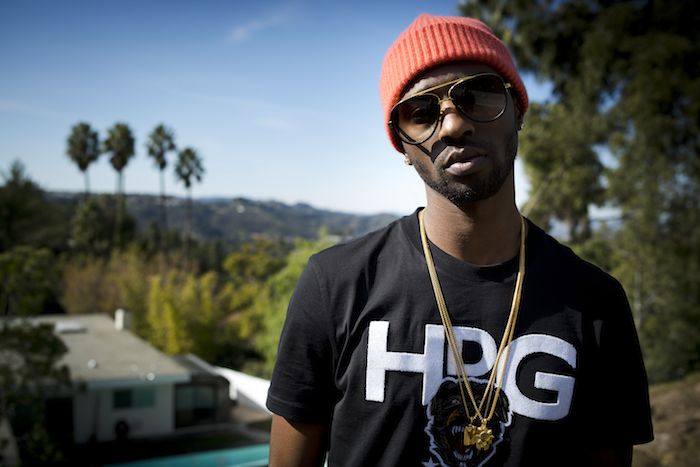
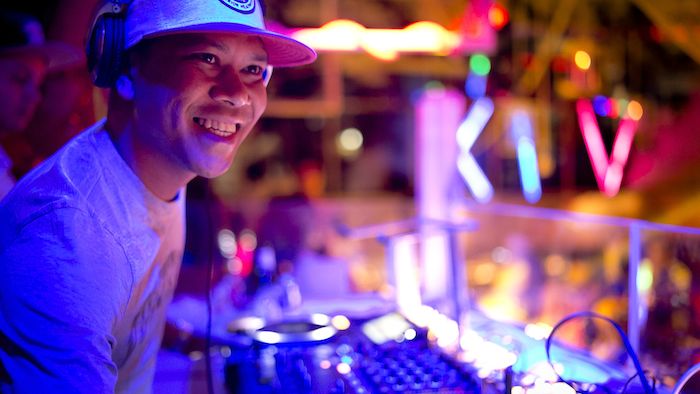
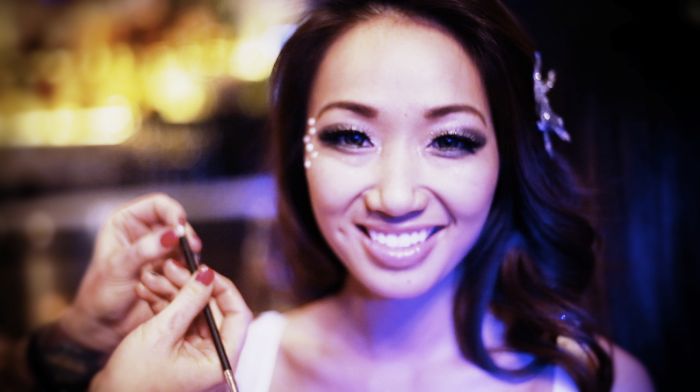
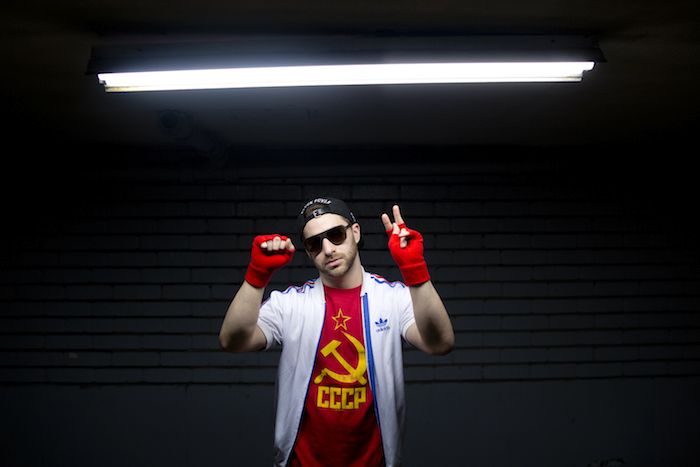
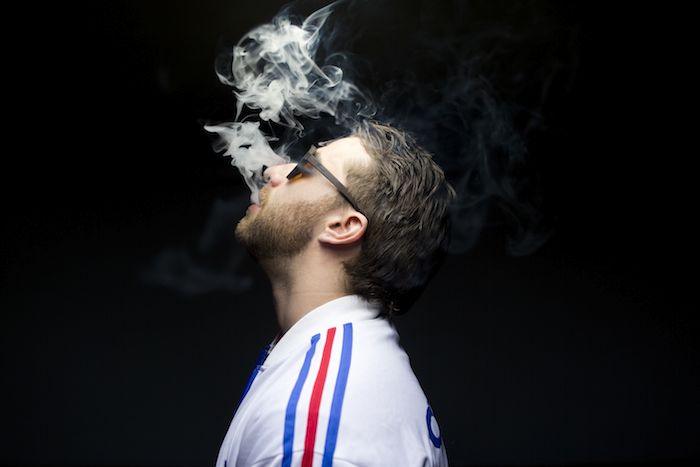
Conclusions
The Good:
- Sharp throughout all aperture ranges, even at 1.4 the sharpness is commendable
- Colors are very snappy, contrast is crisp, no noticeable color casts
- Construction of lens is phenomenally solid, also balances very well on most SLRs
- Size and texture of focus rings allows for follow focus attachments very easily for video applications (e.g. follow focus modifications)
- Fast aperture for manageable price, especially when compared to Nikon and Canon equivalents
- Beautifully smooth operation of all moving parts (aperture and focus rings)
The Less Good, But Hardly Bad:
- The DOF at 1.4 in subjects that are near to the lens is RAZOR thin, though we can't hold this against the lens, it's just a product of manually focusing at 1.4 - if you're not used to it, you're in for a surprise.
- The distance meter appeared to be slightly off, it was better to rely on our eyes when manually focusing, and it might take some time to get used to the long focus throw, however, it is incredibly smooth and easy to operate.
- Lack of focus confirmation or autofocus on anything but Nikon
- Slight vignette at wider apertures (though if this is a con, you can decide, I actually enjoy the look but I've gotten in plenty of arguments over it)
For the street price of $479, this lens is a fantastic deal. If your work requires you to work quickly in dim situations, you may want a lens that retains autofocus and electronic aperture (if you aren't a Nikon shooter), so do take note of that, but the price reflects the lack of electronics. However, for those of us who are able to set up and take our time composing and focusing, it's a non issue. The absolutely rock-solid build, fantastic colors and contrast, smooth focus throw and lack of distortion make this lens an absolute winner for anyone who is looking for a lens to cover multiple bases. Photographer/videographer crossover specialists will rejoice in the applications of the lens for video, and they'll also be able to create some fantastic photographs with it to boot.
The Rokinon 35mm f1.4 Aspherical can be purchased at B&H Photo Video for $479 for Canon, Sony, Pentax, Olympus and Samsung and $499 for Nikon (with focus confirm chip).







Any news from Rokinon on the 24mm TS lens they've got in the works? Really excited to try that one out for architecture.
Uhm.. 1. The example images looks upscaled or very heavily compressed. 2. There are no settings for any of the shots, apertures etc. 3. No link to full res images. Also, what's going on at the corners of the XIV girls?
Great lens though. Been looking at used ones for the last few weeks.
Jpeg compression is a thing, unfortunately. Since there are no electronics in the lens, EXIF is more or less non existant, and the aperture is manually controlled, and what good would just a shutter speed be? Didn't think to carry around a notebook or anything while shooting, would have been a nice addition but unfortunately unrealistic.
I mean, look at the photos. This is more then just jpeg compression. Looks like the posts on Fstoppers where they've uploaded photos too small - and the site upscales them to 700x or whatever the resolution is. Although the admin usually notice this and fixes it.
The make up girl is not even close to being sharp. You can clearly see the artifacts in all the male portraits as well, around the edges of the body and sunglasses (less in the DJ one).
Not even a link to full res? Would be really helpful. Cheers!
And this is where PNG kicks JPEG's balls. ;)
Not necessarily. As I understand it, PNGs don't do as well as jpgs with gradients at lower bitrates. (And what is photography/real life if not a whole bunch of gradients?) At higher bitrates, PNG files become large and can put a strain on bandwidth and hosting.
Check out this article:http://www.howtogeek.com/howto/30941/whats-the-difference-between-jpg-pn...
PNG-24 is lossless, the gradients are unaffected because nothing changes from the source material. JPEG compresses destructively and uses algorithms to compensate for the image quality loss, which results in artifacting. Saving a photo in fewer colours makes no sense, unless you WANT a shitter looking image, in which case I don't blame you for picking JPG.
Perhaps I should have been more clear: I agree that at higher bitrates, PNG images look good. I also agree that jpgs are not the final word on image quality. I disagree with your statement about jpgs using fewer colors; jpg images can hold 24-bit color just like PNG-24, although the usage of that color information differs.
However, high bitrate PNG files are much larger than similar-quality jpg files, which poses a problem for internet usage. Also, the PNG format does not include a standard for containing Exif data.
Huh. You were the one bringing up fewer colours being a disadvantage of PNG (lower bitrate = lower amount of colour). EXIF-data is important when exactly? How many times have you gone to fstoppers to download the image and import it to view the EXIF-data? EXIF-data is important (at least to me) when I catalogue things, and then I do that in RAW. PNG is bigger, yes. About 5-8 times bigger than JPEGS. Usually a big PNG-24 image will be around 1-2MB. Which takes all of 1 second to download with a slow 10Mbit connection.
The point of the bitrate/color comment was to say that, generally, at comparable (small) file sizes, PNGs will have fewer colors and will look noticeably worse. We seem to agree that low bitrate PNGs are not the way to go.
As for Exif data, this may not be critical on Fstoppers, but it is important elsewhere, like on photo-sharing sites and photography education sites where the pages are scripted to report Exif information read directly off the image.
And I will repeat that bandwidth and file size is a major issue. The average broadband speed in the United States is 7.4 Mbps, and globally the average is 2.9 Mbps. Downloading one image at a time may not make much of a difference, but downloading 100 images at a time will. More importantly, hosting thousands of images with millions of pageviews makes a huge difference. The economy of scale is entirely why jpgs are the dominating format for photographic images.
FYI: There is a thing called 'thumbnails', thumbnails are almost auto-generated as very small JPEG-files.
Thumbnails are a thing, sure, but using them imposes a restriction on the way websites are designed. It also requires that one uploads two copies of each image (one high resolution PNG, and one low resolution jpg with Exif) rather than just one high resolution jpg with Exif that can be re-sized server-side. Thus, for website designers and content creators, this is less than ideal.
I would be very careful about saying "no site, ever" in this day of infinite and long/near-infinite scrolling (see also tumblr, Pinterest, flickr, etc). This was not a stupid example.
We're a bit off-topic at this point, but yes, developing countries dominate the low end of the broadband spectrum, although mobile devices in developed countries are not far behind. Does it matter? In less developed countries in particular, it is common for netizens to pay for their internet access based on time and/or data usage, of which PNGs will take up both. Is it reasonable to impose that financial burden on them simply because the perceived benefits of PNG files aren't such an inconvenience for others?
I'll bring it back around and finish the discussion here. Do PNG files offer alpha channels and lossless compression? Yes, absolutely, score one for PNG. Do jpgs offer easy portability and access to Exif data? Yes. When used appropriately, do PNGs and jpgs offer high image quality, suitable even for printing (where printing on physical media is assumed to be the gold standard for quality)? Yes, they both do, and in fact some professional-quality photo printers only accept jpg. Final verdict? There is no ball-kicking. PNG and jpg have different strengths, and as we've discussed, the relative importance of those strengths is highly debatable in real-world usage.
Thanks for not measurebating all over this post Mike :-) real-world examples are the true test.
If its gonna have a red stripe, I want an EF mount. Or release the Canon hounds.
It is available in EF mount ;)
DO WANTS
whats the name of this song?
There is a focus confirmation beep on all Pentax DSLRs when shooting with a manual lens, not just Nikon
I've had one of these for my General Walkabout lens for just over a year now, and have been thrilled with it like you wouldn't believe. Nice sharp shots, easy to use - I would pick one up again in a hot second.
* http://www.flickr.com/photos/tonyjcase/8388481816
* http://www.flickr.com/photos/tonyjcase/8290051236
* http://www.flickr.com/photos/tonyjcase/7903154610
Now, mind you - there is a downside to the lens. If something goes wrong with it, you're boned. I had my aperture go out on mine 11 months into owning it. In my quest to get it fixed at the local camera stores, I quickly came to the conclusion that it would be MUCH cheaper to just buy a new lens. It would have been 200 bucks for the fellow to just open it up and find out he couldn't get parts for it.
Fortunately the Rokinon warranty expired a month after it broke, so I was able to get a new one. But yeah, if it had been 13 months instead of 11 months, I would have been out 500 bucks.
I don't know... I'm not sure that is a good lens for portraiture: the distortion even if it's not too strong is still there.
But still I must admit that compared to the Canon or Nikon (new) counterpart it's really cheap and it has great value.
I think that it's a good lens (as a photographer) for stage, internal and (maybe) group (where there is not much space) shoots.
Of course its not a portrait lens. Not technically, but anything under 50MM will give you distortion in the classic portrait.
Double post
Have the cine version of this lens and it's simply a beauty! You can literally shoot in any lighting condition with this lens.
My experience with this lens showed a lot of halation at f/1.4. Granted, it was better than my old 50mm f/1.4 Ai Nikkor, but under the high contrast conditions I was disappointed with this lens at full aperture. One stop down things change dramatically, and 2-3 stop s down it's just phenomenal. But I wanted this for my DX portrait lens, and I wasn't impressed with it's f/1.4 performance. I'd post some examples, but my Photobucket account is only good for 1024 or less res. If anyone knows where I can post high res for free, I'll put 'em up for your study.
"all of the footage is ‘raw,’ that is, there were no changes to color, saturation, contrast, etc."
Raw as in Magic Lantern RAW video or using the picture profiles like Standard, Portrait, Neutral, etc?